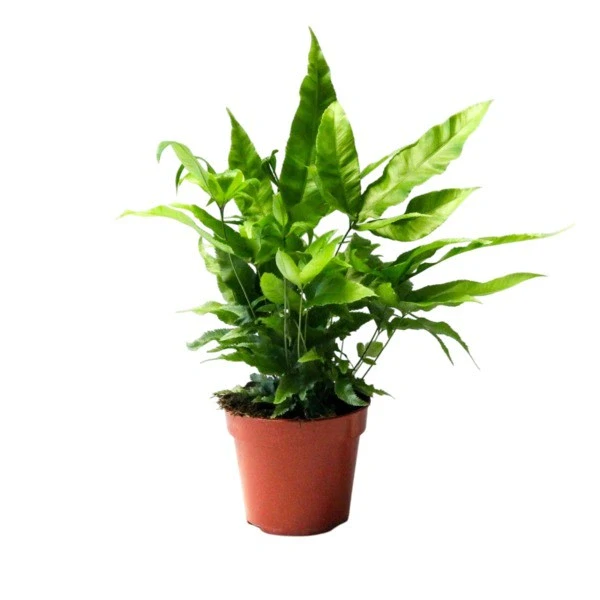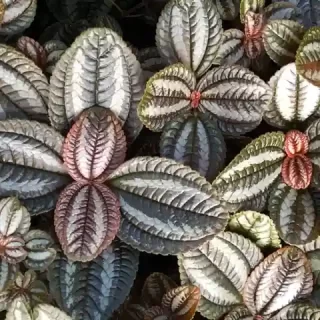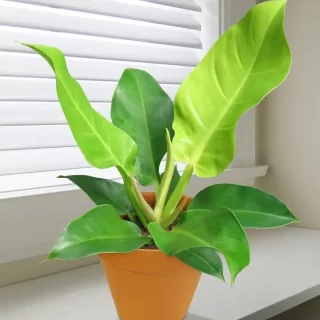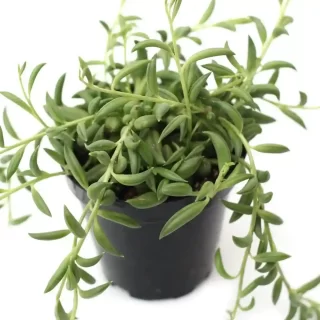Pteris Cretica Parkeri Fern
Original price was: ₹1,899.00.₹899.00Current price is: ₹899.00.
5 in stock
Size: Bushy Plant | 4″ Pot Included | Free Shipping
The Pteris Cretica Parkeri fern, also known as Parker’s Brake Fern or Silver Ribbon Fern, is a beautiful and relatively easy-to-care-for houseplant.
Here’s a comprehensive guide to keeping Pteris Cretica Parkeri Fern thriving, especially in the climate of India:
Light:
- Bright, Indirect Light: This fern thrives in bright, indirect light. In India, avoid placing it in direct sunlight, especially during the hot summer months, as this can scorch its delicate fronds.
- Ideal Spots: North or east-facing windows are usually ideal. You can also place it near a south or west-facing window, but ensure the light is filtered with a sheer curtain.
- Low Light Tolerance: It can tolerate moderate to low light conditions, but growth may slow, and the foliage might become less dense. If the leaves turn yellow, it might be a sign of insufficient light.
Water:
- Consistent Moisture: Pteris Cretica Parkeri prefers consistently moist soil. Water when the top inch of the soil feels slightly dry to the touch.
- Watering Frequency: In India’s warmer climate, you may need to water 2-3 times a week, or even more frequently, depending on the humidity and temperature of your home. Always check the soil moisture before watering.
- Thorough Watering: Water thoroughly until water drains from the bottom of the pot. Discard any excess water in the saucer to prevent root rot.
- Avoid Overwatering: While it likes moisture, constantly soggy soil can lead to root rot. Ensure your pot has good drainage.
- Water Quality: Use room-temperature or lukewarm water. Avoid very cold or hard water if possible.
Humidity:
- High Humidity Preferred: This fern thrives in high humidity, ideally between 50-70%. India’s humidity levels can be naturally high, especially during the monsoon season, which this fern will appreciate.
- Increasing Humidity:
- Misting: Regularly mist the fronds with room-temperature water, especially during dry periods.
- Pebble Tray: Place the pot on a tray filled with pebbles and water. Ensure the bottom of the pot doesn’t sit directly in the water.
- Humidifier: If your indoor air is dry, especially during winter or if using air conditioning, a humidifier can be beneficial.
- Grouping Plants: Placing it near other plants can create a microclimate with higher humidity.
- Bathroom: A steamy bathroom can be a temporary or even semi-permanent home if it receives indirect light.
Temperature:
- Ideal Range: The ideal temperature range is between 16°C to 24°C (60°F to 75°F).
- Avoid Extremes: Protect it from cold drafts and sudden temperature changes. Avoid placing it near heating or cooling vents. Temperatures below 10°C (50°F) or above 29°C (85°F) should be avoided.
Soil:
- Well-Draining and Rich: Use a well-draining potting mix that retains some moisture. A mix containing peat moss, perlite or pumice, and loamy soil works well.
- Slightly Acidic: It prefers a slightly acidic to neutral pH (around 5.5 to 6.5).
- Organic Matter: Incorporating organic matter like compost or worm castings can improve soil health and moisture retention.
Fertilizer:
- Growing Season: Fertilize monthly during the active growing season (spring and summer) with a balanced, liquid houseplant fertilizer diluted to half strength.
- Dormant Season: Reduce or stop fertilizing during the fall and winter months when growth slows down.
- Avoid Over-fertilizing: Over-fertilizing can damage the roots and foliage.
Pruning:
- Minimal Pruning: Generally, minimal pruning is needed.
- Remove Dead or Yellowing Fronds: Trim away any dead, brown, or yellowing fronds at the base using clean, sharp scissors to maintain the plant’s appearance and prevent potential issues.
Repotting:
- Signs of Being Pot-Bound: Repot when the plant becomes root-bound (roots circling the inside of the pot). This is usually every 1-2 years.
- Spring is Best: The best time to repot is in the spring.
- Choose the Right Pot: Select a pot that is only slightly larger than the previous one and has good drainage holes.
Pests and Diseases:
- Generally Pest-Resistant: Pteris Cretica Parkeri is generally relatively pest-free.
- Potential Issues: However, watch out for common houseplant pests like spider mites, mealybugs, or scale, especially in dry conditions. Treat any infestations promptly with appropriate methods.
- Root Rot: Overwatering is the primary cause of root rot. Ensure proper watering and good drainage.
Propagation:
- Division: The easiest way to propagate this fern is by dividing the rhizome (the creeping stem at the soil surface) during repotting. Ensure each division has its own set of fronds and roots.
- Spores: It can also be propagated by spores, but this is a more complex and time-consuming process.
Key Considerations for India:
- Monitor Humidity: While India can be humid, indoor humidity can still drop, especially with air conditioning. Pay attention to humidity levels and take steps to increase them if needed.
- Avoid Direct Summer Sun: The intense summer sun can quickly scorch the delicate fronds. Ensure your fern is well-protected.
- Watering Adjustments: You’ll likely need to water more frequently during the hot and dry seasons and less during the cooler, more humid periods.
By providing the right conditions, your Pteris Cretica Parkeri fern can thrive and bring a touch of lush greenery to your home in India. Remember to observe your plant regularly and adjust your care routine as needed based on its specific needs and the environmental conditions.
Only logged in customers who have purchased this product may leave a review.












 If you need any assistance, I'm always here. Have you found what you were looking for?
If you need any assistance, I'm always here. Have you found what you were looking for?
Reviews
There are no reviews yet.